The marvellous spatuletail (Loddigesia mirabilis) is a truly incredible bird, known for its stunning displays that showcase its magnificent tail feathers. This medium-sized hummingbird, the only member of the genus Loddigesia, is a true marvel of nature. Though its body is small, often described as “about the size of a slightly fluffy ping-pong ball,” it is adorned with a blue crest of feathers on top of its head and a brilliant turquoise throat patch. The male’s flanks and lower abdomen are light green, and there is a black line down the center of the otherwise white chest and abdomen. Its upper parts are bronzy-brown. However, the most fascinating feature of this bird is its tail feathers. The male has only four long feathers in his tail, two of which are long racquet-shaped outer tail feathers that cross at the end in large violet-blue discs known as ‘spatules. He has the ability to move these tail feathers independently, they grow three to four times the bird’s body length depending on the age of the bird.
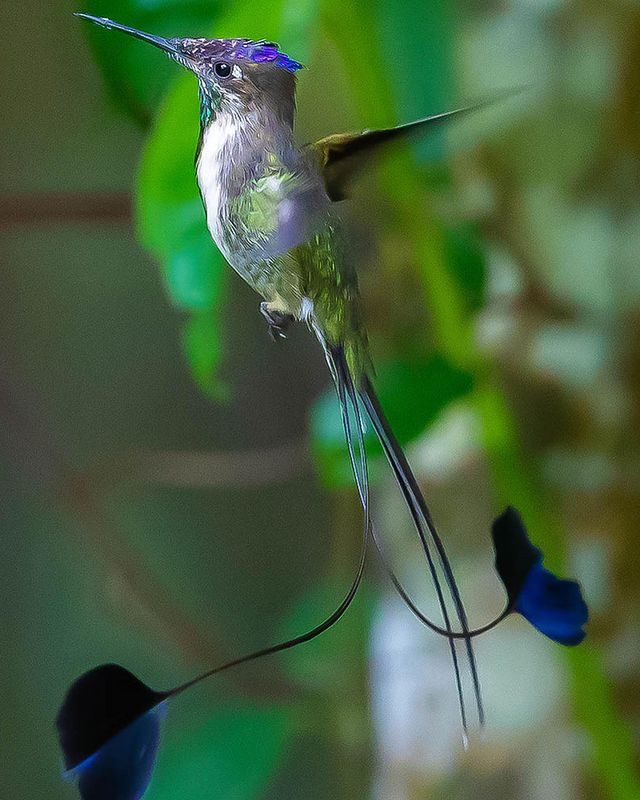
The female marvellous spatuletail also has a tail, though it is much shorter than the male’s and has drop-shaped rackets. The female possesses a white throat and lacks the colorful throat patch and black line that can be seen on the male. Juveniles of this species lack the spatules that the adults have.

This species is found only on the eastern side of the Rio Utcubamba valley, in the Cordillera del Colán, Amazonas, and one site in San Martîn, northern Peru at an elevation of 7000 ft (2100-2900m) (Birdlife International 2000). This shy hummingbird favors living along forest edges as well as isolated woodlots on steep slopes, with its favorite being thorny, almost impenetrable Rubus thickets mixed with Alnus trees.
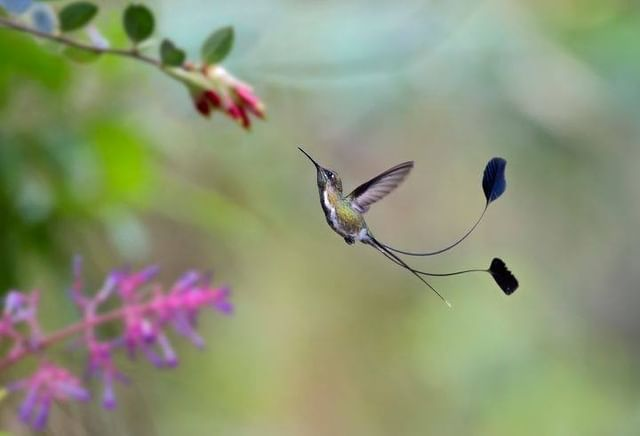
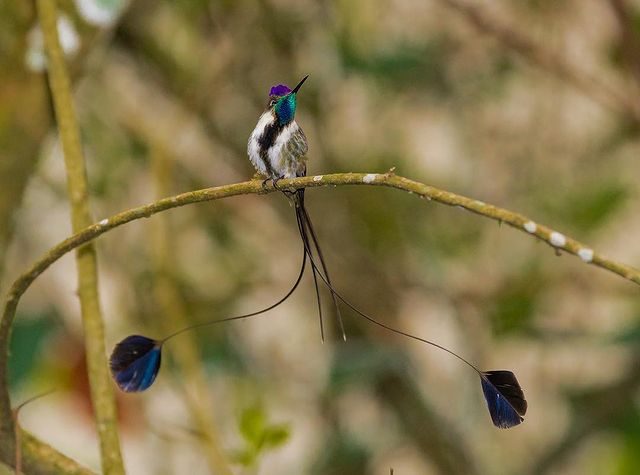
The marvellous spatuletail’s main source of food is nectar found in a variety of brightly colored, scented small flowers of trees, herbs, shrubs, and epiphytes. They particularly look for the red-flowered lily Astomemeria formosissima as well as flowers on the “mupa mupa” trees. They use their long, extendible, straw-like tongues to retrieve the nectar while hovering in place with their tails coked upward.
During the breeding season, which typically starts in late October and goes on until early May, the male will dance around a twig at very high speed, hopping over and over the twig, backward and forwards, in order to impress a female. Once she has picked a male, the female is responsible for building a cup-shaped nest out of plant fibers woven together and camouflaged on the outside with green moss. The nest is lined with soft material, strengthened with spider web. She lays a clutch of up to two white eggs which she incubates for about the first week or two and left alone even on cooler nights after about 12 days – probably due to the small nest size. The chicks leave the nest when they are about 7 – 10 days old.
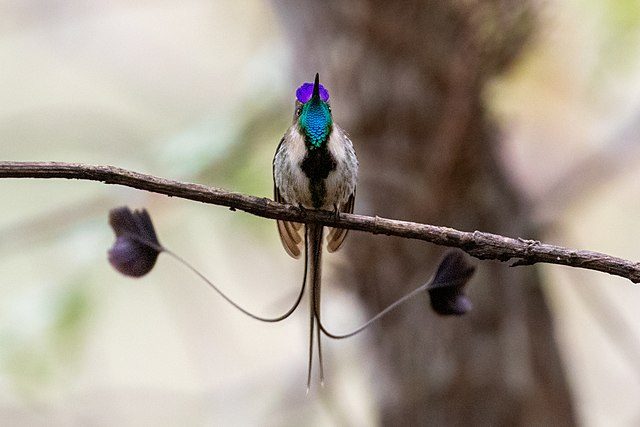
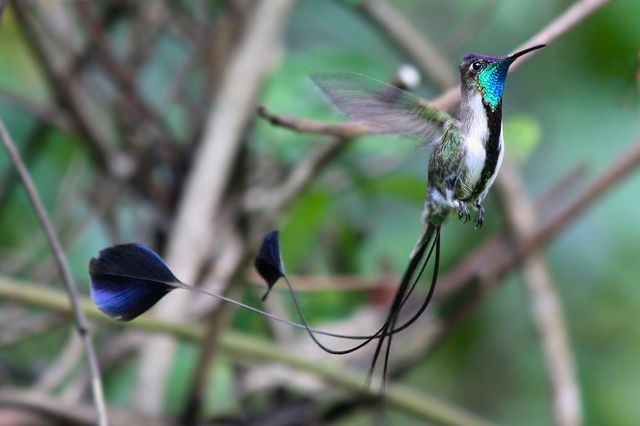
Unfortunately, the marvellous spatuletail is threatened by habitat destruction caused by slash and burn agriculture and illegal wood-cutting. It is also at risk of illegal hunting, as male spatuletails are at times targeted by hunters using slingshots, as some believe that his heart is an aphrodisiac. It is a truly remarkable creature that deserves our protection and admiration.
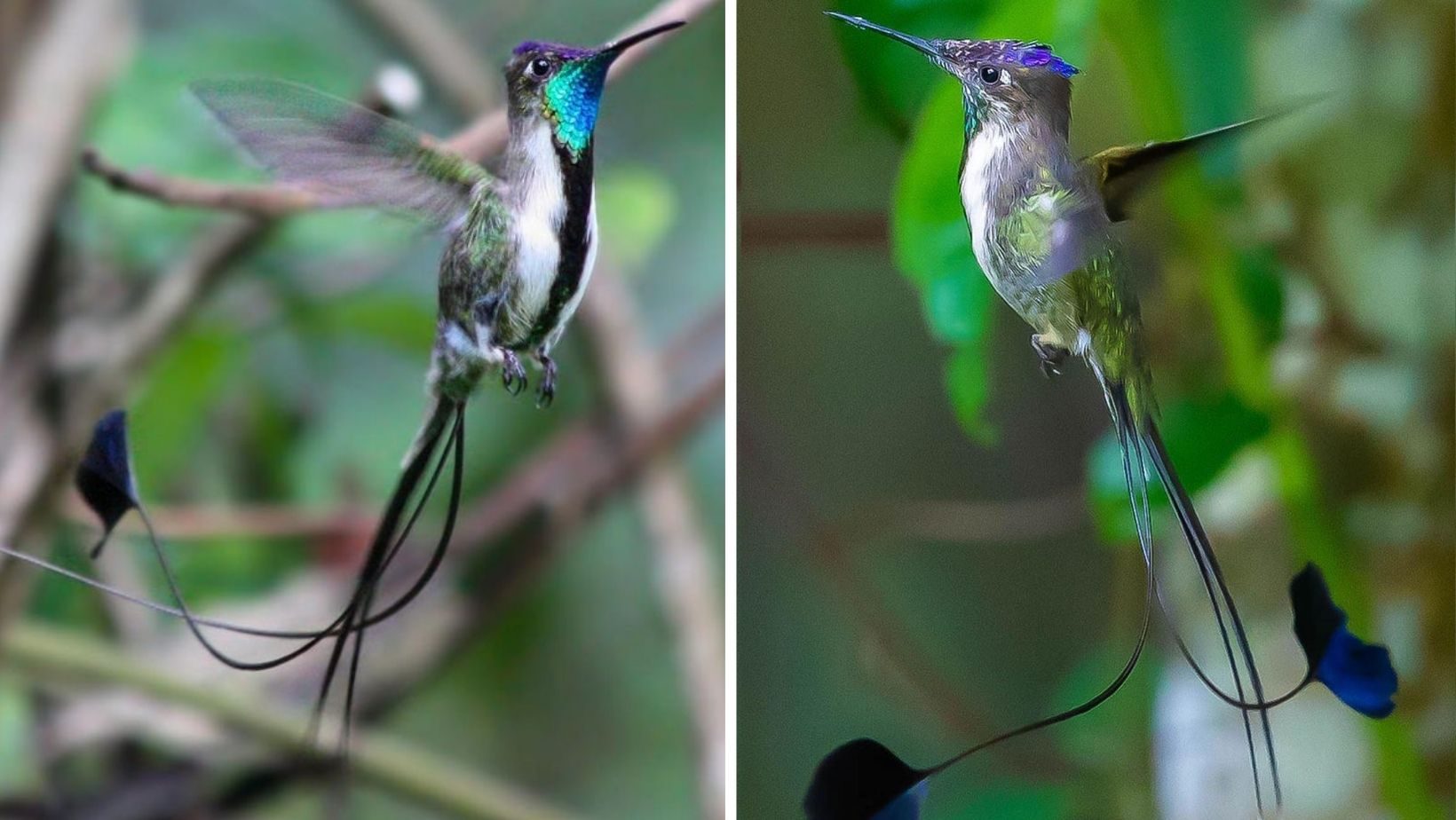
H/T Wikipedia – Creative Commons Attribution-ShareAlike License.
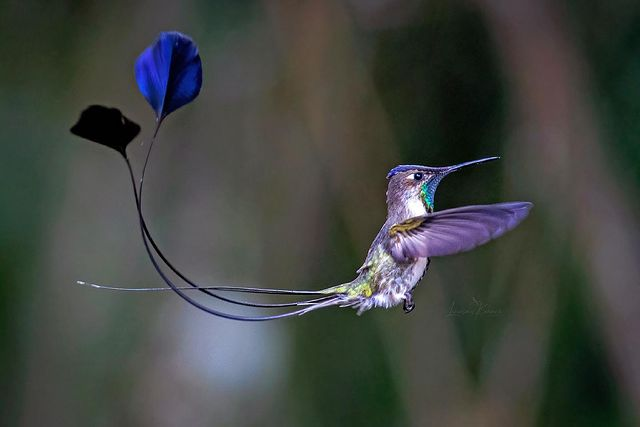
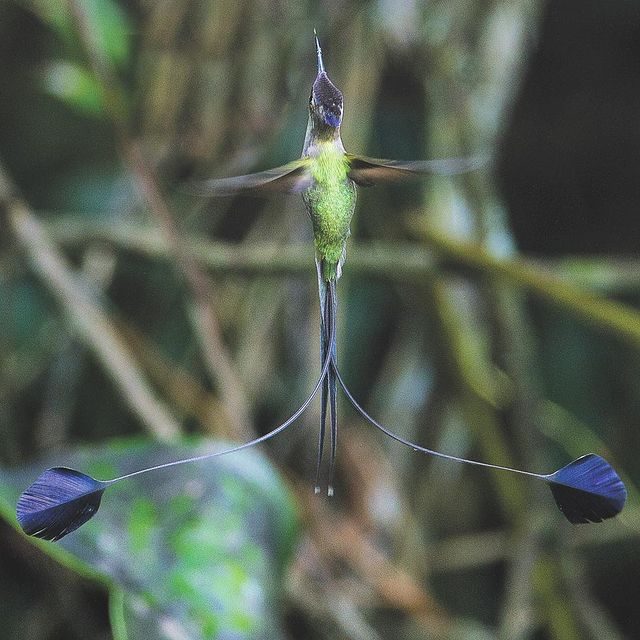
In summary, the marvellous spatuletail is a fascinating bird that has captured the hearts of bird lovers around the world. Its intricate displays, stunning tail feathers, and unique features make it a true marvel of nature. It is a shy bird that prefers to live along forest edges and isolated woodlots on steep slopes. Its main source of food is nectar found in a variety of brightly colored, scented small flowers. During the breeding season, the male performs a high-speed dance to impress a female, and the female is responsible for building a cup-shaped nest and laying up to two white eggs. Unfortunately, this incredible bird is threatened by habitat destruction and illegal hunting. We must do all we can to protect it and ensure that it continues to thrive in the wild.





